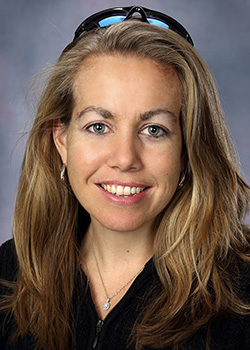Paleontology grant awarded for Sternberg Museum's paleontology work

09/13/16 lds
HAYS, Kan. -- Dr. Laura Wilson, assistant professor of geosciences and the curator of paleontology at Fort Hays State University's Sternberg Museum of Natural History, has been awarded a major National Science Foundation grant.
The $197,597 grant, "Implementation of a Relational Database for the Sternberg Museum Paleontology Collection," began Sept. 1 and runs through Aug. 31, 2019.
"This grant is really exciting because it gives the museum an opportunity to not only improve the data associated with the paleontology collection, but to increase the significance of the collection by making it more accessible," said Wilson.
The purpose is to digitize, image, curate and archive the more than 100-year-old paleontology specimen data collection into a centralized and publically accessible database, a CollectiveAccess data management system.
"By digitizing our collection and storing it in a more sophisticated database, we can share the collection online and make it available to students, scientists, educators and the general public around the world," she said.
"As the director of the Sternberg Museum, I am extremely proud of the dedicated effort Dr. Wilson has given to expanding the paleontological collections of the museum and to expanding the accessibility of the collections to everyone interested in the natural history of our world," said Dr. Reese Barrick.
"This grant is vital because Sternberg specimens are used extensively in research and as the basis for educational programs and exhibits," he said.
Barrick said that many specimens have been donated by local landowners and need to be fully curated and integrated into collections, including vertebrate and invertebrate holdings from the Great Plains.
"The museum provides science education for a large, yet rural region, making online access to material imperative to the educational mission of the museum," said Barrick.
This project will employ multiple FHSU graduate and undergraduate students over the three-year period. These students will be trained in curatorial and research techniques using the specimens digitized during the course of this project.
"Overall, this project will greatly enhance the significance of the Sternberg paleontology collection by improving organization, accessibility, and research and education potential," said Barrick.